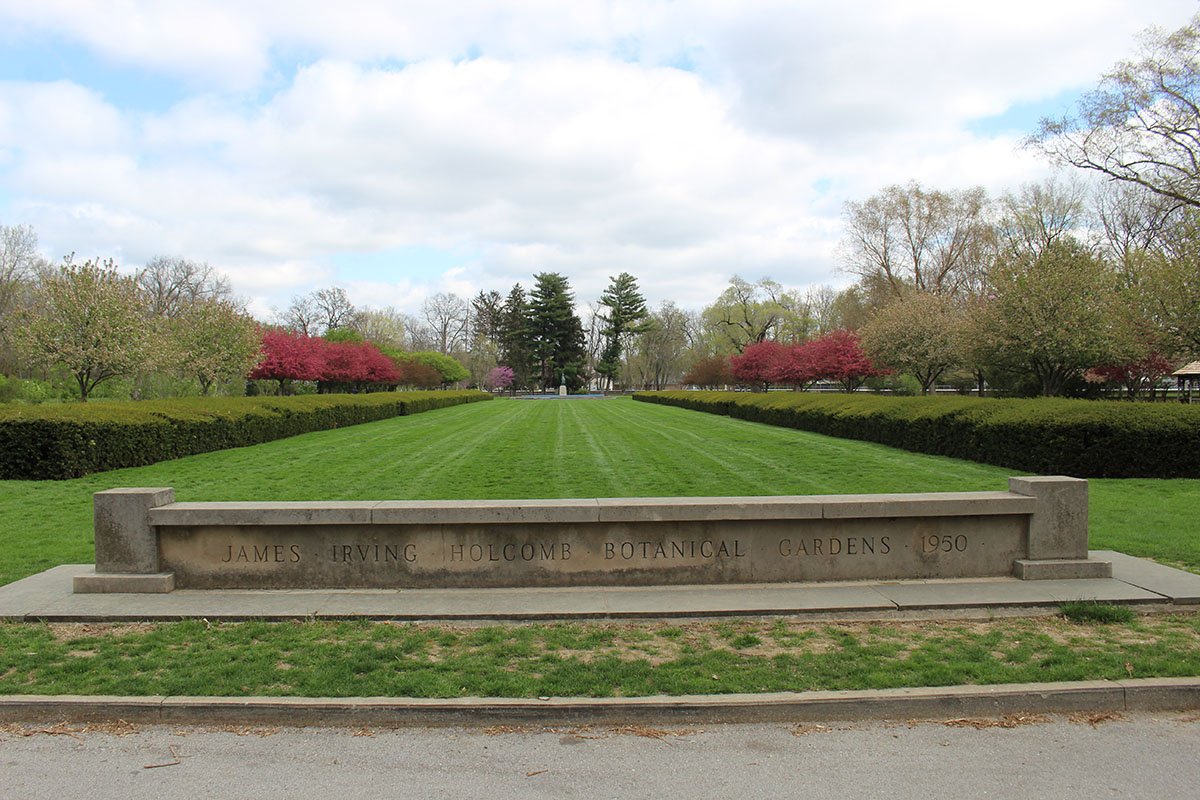22. Historic Public Gardens Add Beauty to City
James Glass
Column that appeared in the Indianapolis Star onAs spring passes into May, city dwellers seek out several public gardens that have delighted generations of residents. Two of these, originally created in the 1920s for the Hugh McKennan Landon family at their Oldfields estate above the Indianapolis Central Canal and White River, were recently restored by the Indianapolis Museum of Art. The Ravine Garden, designed originally by Percival Gallagher of the famed landscape architecture firm Olmsted Brothers, has been restored by the museum on the hillside below the former residence of the Landons and the J.K. Lilly, Jr. family. The garden is informal and picturesque and consists of a series of floral displays nestled along a stream meandering down a course of rocks and settling into pools. Above the ravine is the formal Richard D. Wood Garden, created by the Museum in the 1990s and based on a Gallagher design of the 1920s. Here, seasonal flowers are installed in parterres, or beds, symmetrically arranged. The main axis, or central organizing line, of the garden runs north and terminates at the side entrance of the Oldfields mansion.
On the Southside, the oldest of the city’s public gardens provides a tranquil retreat. The Sunken Gardens in Garfield Park were part of a beautification program proposed in the early 20th century by George E. Kessler, a nationally known landscape architect and consultant to the Indianapolis Board of Park Commissioners. Local architects Vonnegut and Bohn planned a garden in a depression in the southeast portion of the park and laid out brick walkways lined by concrete and terra cotta urns, light standards with lantern heads, and three impressive fountains that lit up the night time sky with brilliant displays of water jets and colors from underwater lamps. Flower beds around the fountains and along the walks provided colorful displays of seasonal flowers. Above the gardens at the east end were greenhouses in which the Park Department grew bulbs for all the public parks.
The Sunken Gardens continued to be a point of public pride through the 1970s, when decay forced the closure of the fountains. A partial restoration in the late 1970s and a comprehensive restoration by the administrations of Mayors Stephen Goldsmith and Bart Peterson have returned the beauty of the gardens by both day and night to the site. In 1954-55, the City replaced the original greenhouses with one of the first aluminum conservatories in the country. Designed by Indianapolis architect David V. Burns, the conservatory resisted rust and provided a light weight structure that avoided obstructive interior columns and a maximum of natural light to plants within. The conservatory has since become a showplace of exotic tropical plants in the city. A rainforest climate is sustained and shelters flowers and trees drawn from equatorial areas around the globe, including multiple varieties of orchids, palm trees, and banana trees. The Conservatory is also known for its three annual flower shows: a spring bulb show in early April, a chrysanthemum show in the fall, and a poinsettia show in December. The Sunken Garden beds are covered by tulips in March and early April and with zinnias, petunias, angelonias, and marigolds in the summer.
The grounds of Butler University on the Northside include several garden and landscape design features of considerable beauty, all courtesy of Indianapolis philanthropist and Butler benefactor James Irving Holcomb. On the north edge of the campus, along the south bank of the Central Canal, is the Holcomb Botanical Garden, given the university by Holcomb in 1950 and designed by Indianapolis landscape architect A.W. Brayton, Jr. The donor, who had visited gardens all over the world in his travels, believed that “nothing so relaxes a human being from the tensions of modern living as a stroll in a beautiful garden.” His creation at Butler today consists of a central grassy mall bounded by taxus yew hedges leading to an 1840 bronze statue of Persephone, Greek goddess of spring, summer, and growing things, standing in a reflecting pool. Outside the hedges are parterres that each spring display tulips, irises, and peonies. North of the formal portion of the garden are multiple varieties of lilac bushes spreading color through May. Above the Holcomb Botanical Garden is a lagoon with central fountain created by Holcomb in the 1950s, and looking down on the lagoon from the summit of a hill at its north edge is the Holcomb Memorial Carillon. Several flights of stairs bounded by substantial hedges lead down to the lagoon from the carillon, which adds restful musical chords to the enjoyment of natural beauty in the lagoon and gardens.

Holcomb Gardens, Butler University. James Glass, 2021
